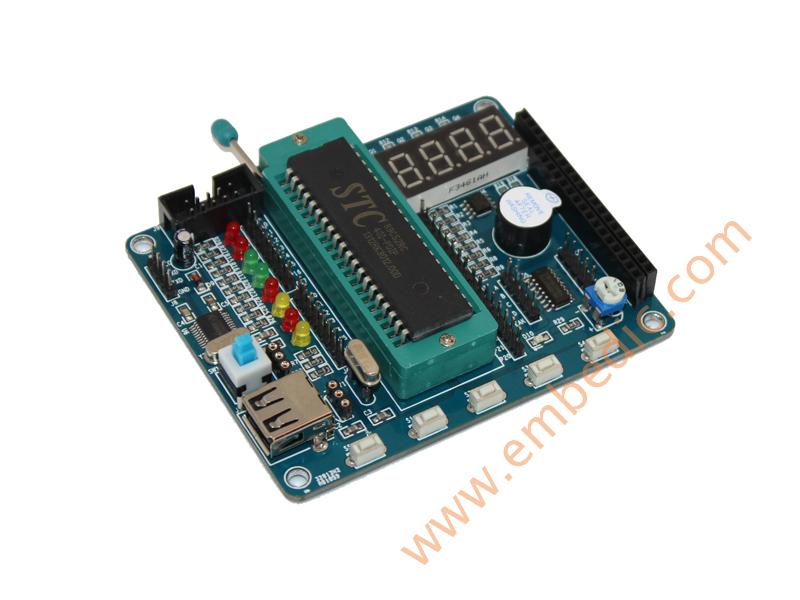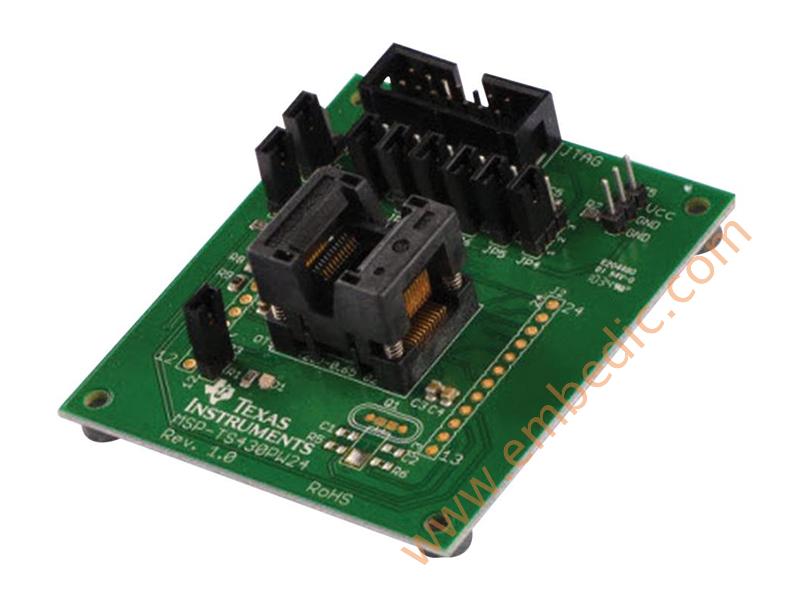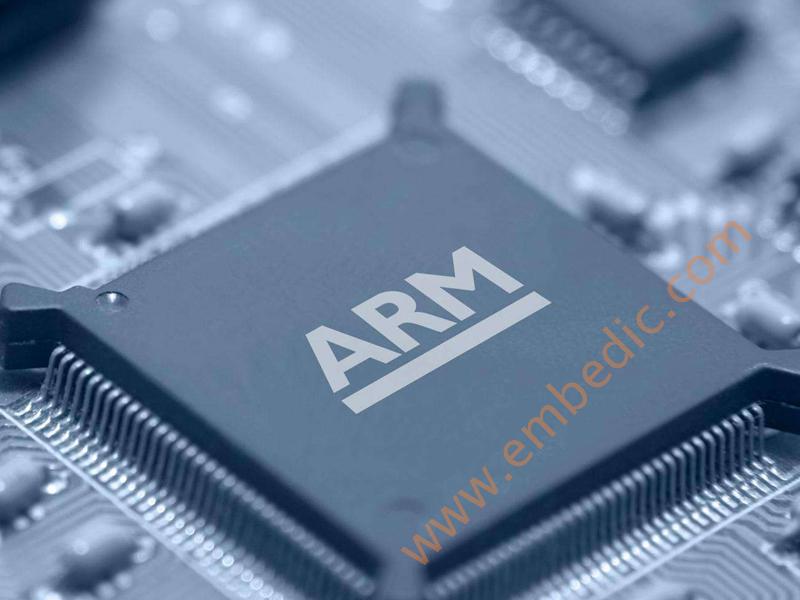Today's single-chip manufacturers are dazzling, with different product performance. According to the specific situation, which model should we choose? First, let's clarify two concepts: centralized instruction set (CISC) and reduced instruction set (RISC). The data line and instruction line of the single-chip microcomputer with the CISC structure are time-division multiplexed, which is the so-called Feng. Neumann structure. It has rich instructions and strong functions, but the instruction fetching and data fetching cannot be performed at the same time, the speed is limited, and the price is high. The data line and instruction line of the single-chip microcomputer with RISC structure are separated, which is the so-called Harvard structure. This allows the fetching of instructions and data to be performed at the same time, and because the general instruction line is wider than the data line, the instruction contains more processing information than the similar CISC microcontroller instructions, and the execution efficiency is higher and the speed is faster. At the same time, the instructions of this kind of single-chip microcomputer are mostly single-byte, and the space utilization rate of the program memory is greatly improved, which is conducive to achieving ultra-miniaturization.
Single-chip microcomputers are called single-chip microcomputers for short, and are also called microcontrollers. They are an important branch of microcomputers. SCM is a large-scale integrated circuit chip developed in the mid-1970s. It is a device with CPU, RAM, ROM, I/O interface and interrupt system on the same silicon chip. Since the 1980s, single-chip microcomputers have developed rapidly, and various new products have continuously emerged, and many high-performance new models have emerged, which have gradually become one of the pillar industries in factory automation and various control fields.
Both AVR and pic are 8-bit microcontrollers with different structures from 8051. Because of the different structures, the assembly instructions are also different. They are also different from the 8051 which uses the CISC instruction set. They are both in the RISC instruction set. Some instructions are instructions of a single instruction cycle, so under the same crystal frequency, the speed is faster than 8051. In addition, PIC's 8-bit microcontroller was the world's largest shipment of microcontrollers in the past few years, followed by Freescale's microcontrollers. ARM is actually a 32-bit microcontroller. Its internal resources (registers and peripheral functions) are much more than 8051, PIC and AVR, and are very close to the computer's CPU chip. Commonly used in mobile phones, routers, etc. DSP is actually a special kind of single-chip microcomputer, which ranges from 8-bit to 32-bit. It is specifically used to calculate digital signals. In certain formula calculations, it is faster than the fastest CPU in current home computers. For example, a general 32-bit DSP can calculate a 32-bit multiplied by a 32-bit product and then add a 32-bit number in one instruction cycle. It is applied to some occasions that require high real-time processing.
High reliability, strong functions, high speed, low power consumption and low price indicators are also necessary conditions for single-chip microcomputers to occupy the market and survive.

Early single-chip microcomputers were mainly due to the low level of technology and design, which has always been an important measure of the performance of the single-chip microcomputer, high power consumption and poor anti-interference performance. Therefore, a safe solution was adopted: that is, a higher frequency division coefficient was used to divide the clock frequency to make the instruction Although the CMOS single-chip microcomputer with long cycle and slow execution speed adopts measures such as increasing the clock frequency and reducing the frequency division coefficient, this state is not. Has not been completely changed (51 and 51 compatible). Although some reduced instruction set microcontrollers (RISC) have come out here, they still follow the clock division method.
The introduction of the AVR microcontroller completely broke this old design pattern, abolished the machine cycle, and abandoned the complex instruction computer (CISC) pursuit of complete instructions; adopted a streamlined instruction set, with words as the unit of instruction length, rich operands and opcodes Arranged in one word (this is the case for most single-cycle instructions in the instruction set), the instruction fetch cycle is short, and instructions can be prefetched to achieve pipeline operation, so instructions can be executed at high speed. Of course, this increase in speed is backed by high reliability.
The hardware structure of the AVR microcontroller adopts a compromise strategy of 8-bit and 16-bit computers, that is, the use of local register storage (32 register files) and single high-speed input/output solutions (that is, input capture registers, output compare matching registers, and corresponding Control logic). Improve the instruction execution speed (1Mips/MHz), overcome the bottleneck phenomenon, and enhance the function; at the same time, it reduces the overhead of peripheral management, relatively simplifies the hardware structure, and reduces the cost. Therefore, the AVR microcontroller has achieved an optimized balance in many aspects of software/hardware overhead, speed, performance and cost, and is a cost-effective microcontroller.
To sum up, AVR has the following characteristics
●Harvard structure, with 1MIPS/MHz high-speed operation processing capability;
●Super-functional reduced instruction set (RISC), with 32 general-purpose working registers, overcomes the bottleneck phenomenon caused by the use of a single ACC for processing by the 8051MCU;
●Fast access to the register bank and single-cycle instruction system, which greatly optimizes the size and execution efficiency of the target code. Some models of FLASH are very large, especially suitable for development in high-level languages;
●The output is the same as the HI/LOW of the PIC, which can output 40mA (single output). When used as the input, it can be set as a three-state high impedance input or an input with a pull-up resistor, with the ability to sink 10mA-20mA;
●Integrated on-chip RC oscillators with multiple frequencies, power-on automatic reset, watchdog, start-up delay and other functions, the peripheral circuit is simpler, and the system is more stable and reliable;
●Most AVR chips are rich in resources: with E2PROM, PWM, RTC, SPI, UART, TWI, ISP, AD, AnalogComparator, WDT, etc.;
●In addition to ISP function, most AVRs also have IAP function, which is convenient for upgrading or destroying application programs. AVR series single-chip selection AVR series single-chip computers have a complete series, which can be applied to the requirements of various different occasions. There are 3 grades of AVR microcontrollers:
Low-end Tiny series AVR microcontrollers: mainly Tiny11/12/13/15/26/28, etc.; mid-range AT90S series AVR microcontrollers: mainly AT90S1200/2313/8515/8535, etc.; (being eliminated or transitioning to Mega) high-end ATmega series AVR microcontroller: mainly ATmega8/16/32/64/128 (storage capacity is 8/16/32/64/128KB) and ATmega8515/8535.
What are the advantages of PIC? Maybe you will have such doubts, so I will briefly talk about a few of my views here.
1) The biggest feature of PIC is that it does not engage in simple function accumulation, but starts from the actual situation, attaches importance to the performance and price ratio of the product, and relies on the development of multiple models to meet different levels of application requirements. In fact, different applications have different requirements for the functions and resources of the microcontroller. For example, the igniter of a motorcycle needs a small single-chip microcomputer with less I/O, less RAM and program storage space, and high reliability. If a 40-pin and powerful single-chip microcomputer is used, the investment is large, and it is easy to use. inconvenient. The PIC series has dozens of models from low to high, which can meet various needs. Among them, the PIC12C508 microcontroller has only 8 pins, making it the smallest microcontroller in the world.
This model has 512 bytes of ROM, 25 bytes of RAM, an 8-bit timer, an input line, and 5 I/O lines. The market price is 3-6 yuan per person. Such a single-chip microcomputer is undoubtedly very suitable for applications such as motorcycle ignition. High-end PIC models, such as PIC16C74 (not the most high-end model) have 40 pins, and its internal resources are 4K ROM, 192-byte RAM, 8 A/D, 3 8-bit timers, and 2 CCP modules , Three serial ports, 1 parallel port, 11 interrupt sources, 33 I/O pins. Such a model can be comparable to high-end models of other brands.
2) Streamlining instructions greatly improves execution efficiency. The PIC series of 8-bit CMOS microcontrollers have a unique RISC structure. The data bus and the instruction bus are separated from the Harvard bus (Harvard) structure, which makes the instructions have the characteristics of a single word length and allows the number of instruction codes to be more than 8 bits of data. Compared with the traditional 8-bit microcontroller adopting CISC structure, it can achieve 2:1 code compression, and the speed is increased by 4 times.
3) Zero time to market (Zerotimetomarket). The use of PIC's low-cost OTP chip allows the microcontroller to market the product immediately after its application development is completed.
4) PIC has a superior development environment. The real-time performance of the OTP single-chip microcomputer development system is an important indicator. Most development systems like ordinary 51 single-chip microcomputers adopt high-end models to simulate low-end models, and their real-time performance is not ideal. PIC launches a corresponding simulation chip while launching a new model. All development systems are supported by a dedicated simulation chip with very good real-time performance. From my personal experience, there has not been a situation where the simulation results are different from the actual running results.
5) Its pins have anti-transient capability, can be connected to 220V AC power supply through current-limiting resistance, and can be directly connected to the relay control circuit without photoelectric coupler isolation, which brings great convenience to the application.
6) Thorough confidentiality. PIC protects the code with a secret fuse. After the user burns the code, the fuse is blown, and others can no longer read it unless the fuse is restored. At present, PIC adopts the deep-buried fuse technology, and the possibility of fuse recovery is extremely small.
7) Built-in watchdog timer can be used to improve the reliability of program operation.
8) Sleep and low power consumption modes. Although PIC can no longer be compared with the new TI-MSP430 in this respect, it can still meet the needs in most applications.
The rapid development of MSP430 series one-chip computers and the continuous expansion of the scope of application mainly depend on the following characteristics.

Powerful processing capability MSP430 series single-chip microcomputer is a 16-bit single-chip microcomputer. It adopts a reduced instruction set (RISC) structure and has rich addressing methods (7 source operand addressing, 4 destination operand addressing), simple 27 core instructions and a large number of analog instructions; a large number of registers and on-chip data memory can participate in a variety of operations; there are also efficient table look-up processing instructions; a higher processing speed, the instruction cycle is 125ns under 8MHz crystal drive . These characteristics ensure that a highly efficient source program can be compiled.
In terms of operating speed, MSP430 series single-chip microcomputers can realize 125ns instruction cycle under the drive of 8MHz crystal. The 16-bit data width, 125ns instruction cycle, and multi-functional hardware multiplier (which can realize multiplication and addition) can realize certain algorithms of digital signal processing (such as FFT, etc.).
MSP430 series single-chip microcomputers have many interrupt sources and can be nested arbitrarily, which is flexible and convenient in use. When the system is in a power-saving standby state, it only takes 6us to wake it up with an interrupt request.
The reason why the ultra-low power MSP430 microcontroller has ultra-low power consumption is that it has its uniqueness in reducing the power supply voltage of the chip and the flexible and controllable operating clock.
First of all, the power supply voltage of MSP430 series one-chip computer adopts 1.8~3.6V voltage. Therefore, when it can run under the 1MHz clock condition, the current of the chip will be about 200~400uA, and the minimum power consumption of the clock off mode is only 0.1uA.
Second, the unique clock system design. There are two different system clock systems in the MSP430 series: the basic clock system and the frequency-locked loop (FLL and FLL+) clock system or the DCO digital oscillator clock system. Some use one crystal oscillator (32768Hz), and some use two crystal oscillators).
Because the system clock system generates the clock required by the CPU and each function. And these clocks can be turned on and off under the control of instructions, so as to control the overall power consumption. Due to the different functional modules that are turned on when the system is running, that is, different working modes are adopted, the power consumption of the chip is significantly different. There is one active mode (AM) and five low-power modes (LPM0~LPM4) in the system. In the standby mode, the power consumption is 0.7uA, and in the power-saving mode, the minimum can reach 0.1uA.
The system works stably. After power-on reset, the CPU is first started by DCOCLK to ensure that the program is executed from the correct position and that the crystal oscillator has enough time to start-up and stabilize. The software can then set the appropriate register control bits to determine the final system clock frequency. If the crystal oscillator fails when it is used as the CPU clock MCLK, the DCO will automatically start to ensure the normal operation of the system; if the program runs away, the watchdog can be used to reset it.
ARM was established in Cambridge, England in 1991, mainly selling chip design technology licenses. At present, microprocessors using the Intellectual Property (IP) core of ARM technology, which we usually call ARM microprocessors, have been used in various product markets such as industrial control, consumer electronics, communication systems, network systems, and wireless systems. , Microprocessor applications based on ARM technology account for more than 75% of the market share of 32-bit RISC microprocessors, and ARM technology is gradually infiltrating all aspects of our lives.
ARM is a company that specializes in the design and development of chips based on RISC technology. As an intellectual property supplier, it does not directly engage in chip production. Cooperating companies rely on the transfer of design licenses to produce unique chips. The world’s major semiconductor manufacturers receive from ARM Purchasing the ARM microprocessor core designed by him, adding appropriate peripheral circuits according to their different application fields, thus forming their own ARM microprocessor chip to enter the market. At present, dozens of large semiconductor companies all over the world use ARM's authorization, which not only enables ARM technology to obtain more third-party tools, manufacturing, and software support, but also reduces the cost of the entire system and makes products easier to enter The market is accepted by consumers and is more competitive.

The 3 major characteristics of ARM processors are: low power consumption, strong functions, 16-bit/32-bit dual instruction sets and many partners.
1. Small size, low power consumption, low cost and high performance;
2. Support Thumb (16-bit)/ARM (32-bit) dual instruction set, which is well compatible with 8-bit/16-bit devices;
3. A large number of registers are used, and the instruction execution speed is faster;
4. Most data operations are completed in registers;
5. The addressing mode is flexible and simple, and the execution efficiency is high;
6. The instruction length is fixed.
The strength of the ARM commodity model is that it has more than 100 partners (Partners) worldwide. ARM is a design company and does not produce chips itself. The transfer license system is adopted, and the partners produce chips.
ARM is not a single-chip microcomputer. To be precise, ARM is an IP core of a processor. The British ARM company develops the processor structure and authorizes it to other chip manufacturers. Chip manufacturers can adjust the structure and functions according to their own needs. Therefore, there are many types of ARM processors in actual use, mainly Samsung, Philips, ATMEL, The functions and usages of several major categories manufactured by INTEL are different. The ARM processor core can also be embedded in other dedicated chips as a central processing unit. For example, Philips' MP3 decoder chip uses the ARM7 core. ARM series processors rarely integrate on-chip hardware resources, which are closer to today's processor category, and are basically not considered as single-chip microcomputers.
Manufacturer: Texas Instruments
IC DIGITAL MEDIA SOC 529FCBGA
Product Categories: SOC
Lifecycle:
RoHS:
Manufacturer: Texas Instruments
IC DIGITAL MEDIA SOC 529FCBGA
Product Categories: SOC
Lifecycle:
RoHS:
Manufacturer: Texas Instruments
IC DGTL MEDIA PROC 529FCBGA
Product Categories: DSP
Lifecycle:
RoHS:
Manufacturer: Texas Instruments
IC DGTL MEDIA PROC 529FCBGA
Product Categories: DSP
Lifecycle:
RoHS:
Looking forward to your comment
Comment